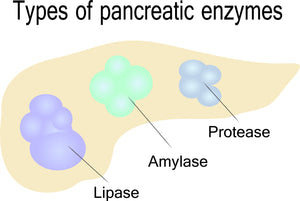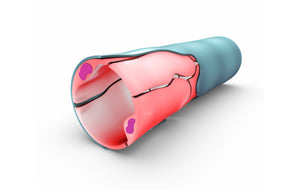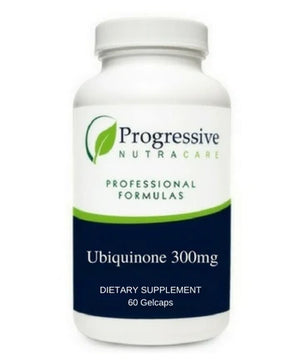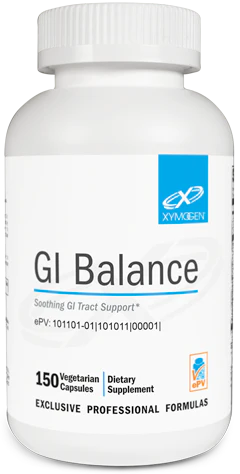Diabetes is an Inflammatory Disease

Type 2 Diabetes has long been associated with diet and obesity, but there have been hints for more than a century that it may stem from inflammation. In the later part of the 19th century as salicylates were more effectively extracted from natural sources like willows, manufacturers were able to create readily usable forms of the compounds like aspirin. Natural sources of salicylates had been used for millennia as a way to decrease fever and inflammation, and aspirin was just a more convenient and potent way to administer these compounds. Researchers in the 1870s investigated salicylic acid (aspirin is acetylsalicylic acid ) in the treatment of various diseases, including Type 2 Diabetes (Rena and Sakamoto, 2014). They found that salicylic acid is antihyperglycemic, meaning it helps reduce and control blood sugar. This research largely lay dormant until the 1950s, where further research also showed both its effects on hyperglycemia and also demonstrated how it was an inflammation mediator. Again, the dots weren’t connected until quite recently: “Over a hundred years ago, high doses of salicylates were shown to lower glucose levels in diabetic patients. This should have been an important clue to link inflammation to the pathogenesis of type 2 diabetes (T2D), but the antihyperglycemic and antiinflammatory effects of salicylates were not connected to the pathogenesis of insulin resistance until recently.” (Shoelson, et al, 2006)
Now that researchers and clinicians had made the connection between inflammation and Type 2 Diabetes, the next step was to focus further research on ways to determine what sort of bodily inflammation caused Type 2 Diabetes, and how to treat it by reducing that inflammation. “The evolving concept of insulin resistance and T2D as having immunological components and an improving picture of how inflammation modulates metabolism provide new opportunities for using antiinflammatory strategies to correct the metabolic consequences of excess adiposity.” (Shoelson, et al, 2006, cited above). The “excess adiposity” referred to here is obesity- having too much adipose tissue in the body. In other words, excess weight combined with inflammation causes the metabolic effect of Type 2 Diabetes. Losing weight and controlling your diet, along with exercise has long been seen as the way to prevent, and even reverse diabetes. Not everyone is successful in this, and given the toll that diabetes takes on the body (including death), ways to remedy inflammation should also be found. How? Inflammation where?
The gut, and more specifically the microbiome has recently been identified as one of the keys to the inflammation associated with Diabetes:
“In the past few years, a two-way relationship between the gut microbiome in the host’s energy balance and immune function has been demonstrated.[90] The gut microbiome seems to differ between obese and lean subjects, flora composition influences metabolism and inversely, diet and metabolic status influence the composition of the gut flora, while a faecal microbiome transplantation from lean donors to insulin-resistant subjects results in beneficial metabolic effects.[91–94] It has been postulated that products from the gut microbiome may interact with the immune system inducing a tissue metabolic modification, which feeds the molecular origin of the low-grade inflammation that characterizes the onset of obesity and diabetes.[95]” (Tsalamandris, et al, 2019). So, obese people have an altered microbiome, and that altered microbiome means that inflammation occurs in the gut, which drives the onset of diabetes. In fact, intervening in gut inflammation could very well be a way to also intervene in diabetes and prevent or perhaps even reverse the condition:
“an alteration in the microbiota to host immune system balance leads to an increased translocation of bacterial antigens towards metabolically active tissues, and could result in a chronic inflammatory state and consequently impaired metabolic functions such as insulin resistance, hepatic fat deposition, insulin unresponsiveness, and excessive adipose tissue development. This imbalance could be at the onset of metabolic disease, and therefore the early treatment of the microbiota dysbiosis or immunomodulatory strategies should prevent and slow down the epidemic of metabolic diseases and hence the corresponding lethal cardiovascular consequences.” (Burcelin, et al, 2012). So, the argument is that an altered microbiome could result in chronic inflammation, more weight gain (specifically from fat deposits), insulin resistance, and therefore metabolic disease (diabetes). Treatment of gut dysbiosis should be an early and ongoing intervention.
Aside from losing weight, and altering your diet, one of the most effective treatments may be to treat your microbiome. There are a number of ways that your microbiome can be disturbed- antibiotics, too little fiber in the diet, food allergies, too much processed food and sugars. All of these things can alter the composition of the bacteria that make up your gut microbiome. There are also other foods and substances that can be employed to help control glucose intake and control inflammation, including antioxidants. Let's look at some excellent candidates.
One substance that has been studied recently that seems to have a good outcome in reducing glucose in the blood is brown seaweed. High levels of glucose (hyperglycemia) is a hallmark of diabetes. “Brown seaweed and its extracts show potential for preventing and managing hyperglycemia. Our meta-analysis confirms that brown seaweed positively affects plasma glucose homeostasis, with particularly promising postprandial plasma glucose effects” (Vaughan, et al, 2022). Meaning that brown seaweed added to the diet may help control glucose levels.
Another possible way to lower glucose levels is with cinnamon. Cinnamon has been used for centuries in traditional medicines, and more recent research has helped to demonstrate its effects for controlling glucose levels in the blood. “Traditional herbs and spices are commonly used for control of glucose among which cinnamon (Ròu Guì; Cinnamomum cassia) has the greatest effect. Research has shown that adding cinnamon to diet can help to lower the glucose level.” (Hasanzade, et al, 2013)
Fiber has been demonstrated to have a beneficial effect on gut flora, and also to decrease the uptake of glucose. Inulin, which has many fiber-like benefits, seems to duplicate the effects of fiber on gut health: “Inulin is thought to share many of the properties of soluble dietary fibers, such as the ability to lower blood lipids and stabilize blood glucose. Additionally, inulin has been shown to enhance the growth of bifidobacteria and lactobacilli and enhance the gut environment.” (Causey, et al, 2000).
For general gut health, particularly of the microbiome, a good quality probiotic can enhance the variety and quality of gut flora. Antioxidants can act to decrease inflammation. Natural anti-inflammatories like curcumin have been found to both decrease inflammation and have antioxidant effects. Eating a better diet can start with fiber, and fresh vegetables and fruit. Limiting sugar and carbohydrates is key, and adding in some compounds that limit glucose levels in the blood can help. A well balanced breakfast smoothie- particularly one with high fiber might help to get your diet reset. A trick to really make strides is to add a mix-in that combines many of the ingredients that you are striving to integrate into your diet. A great option that might appeal to you is Foundation Metabolics, a dietary mix-in for smoothies or just taken with water that comes in three flavors- chocolate, chai, and vanilla. It tastes great, and it combines high protein, polyphenols from brown seaweed, high potency cinnamon extract, inulin, B vitamins, Alpha-Lipoic Acid and green tea extracts as antioxidants, and Chromium, Vanadium, and Zinc to work with the B vitamins against glucose uptake. This formula contains many of the compounds mentioned in this article that have been studied as effective mediums against inflammation, glucose uptake, weight gain, and other triggers for Type 2 Diabetes. Start your morning off healthy, delicious, and with a view to preventing or combating diabetes!
- Tags: Article Conditions Inflammation
- Robert Thomas







Comments 0